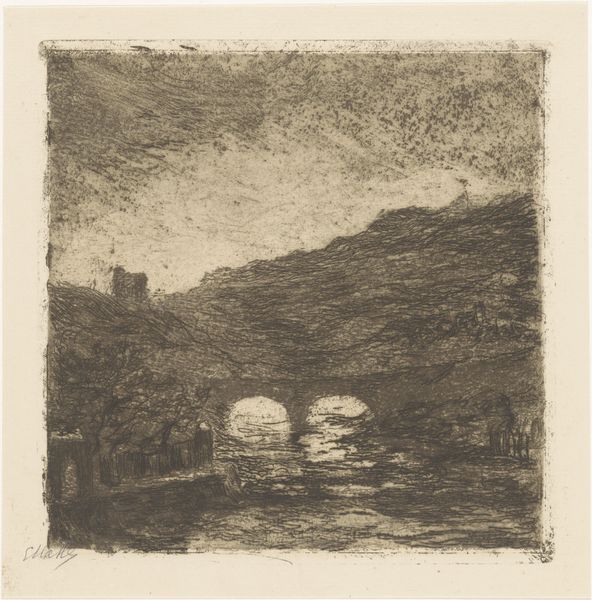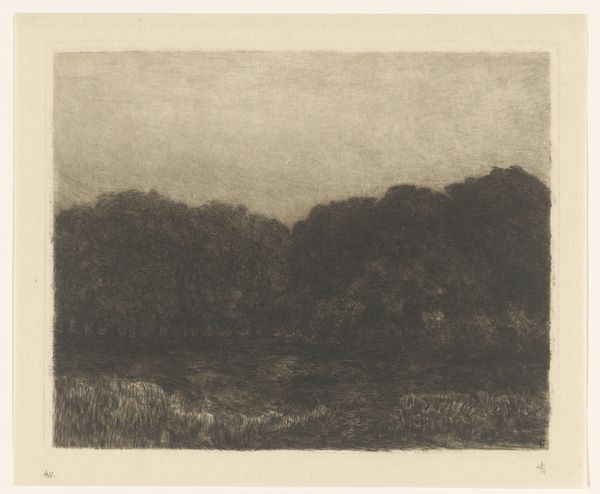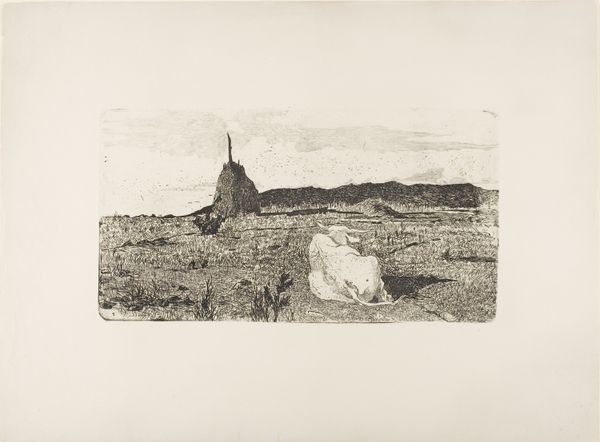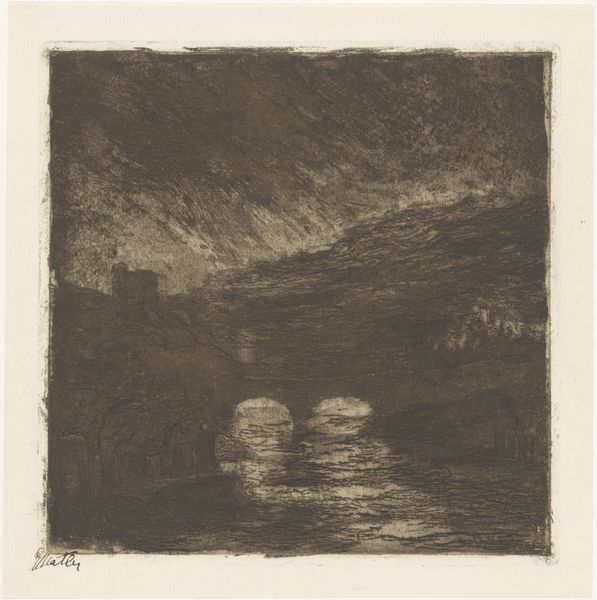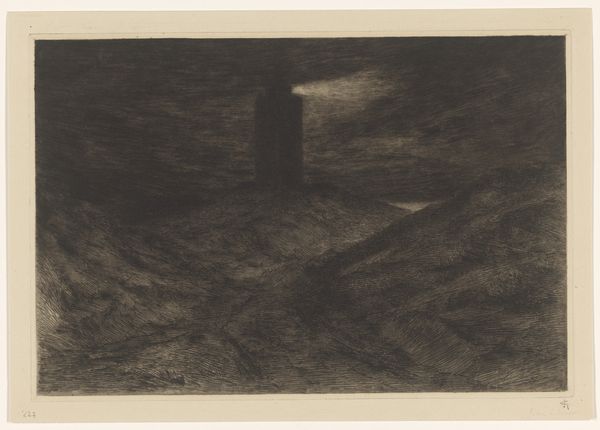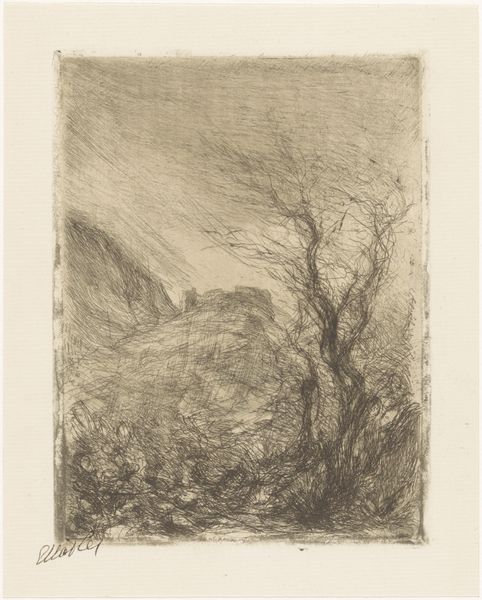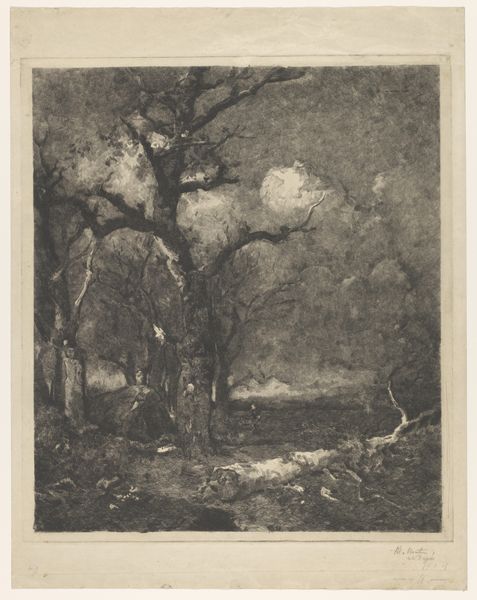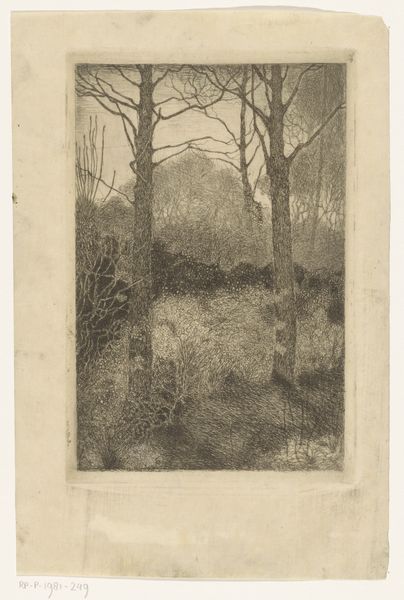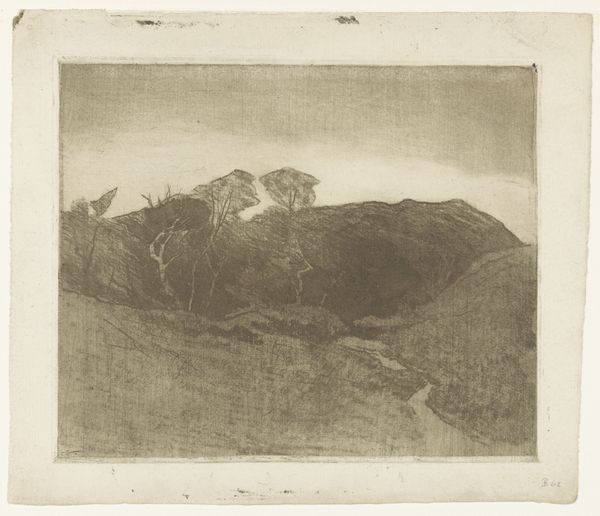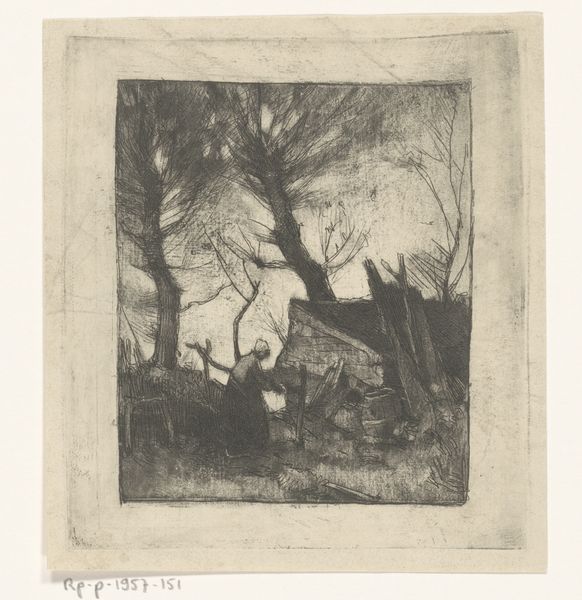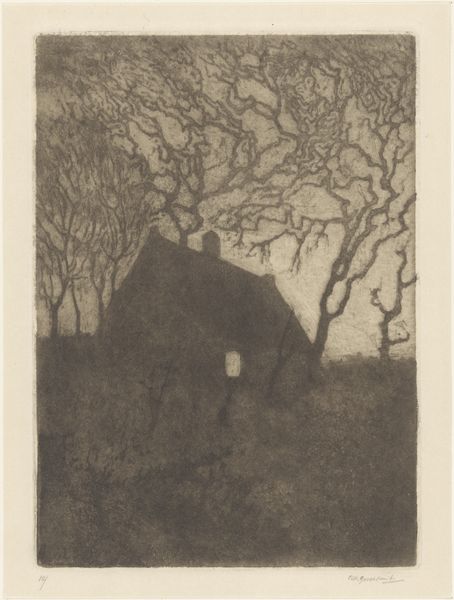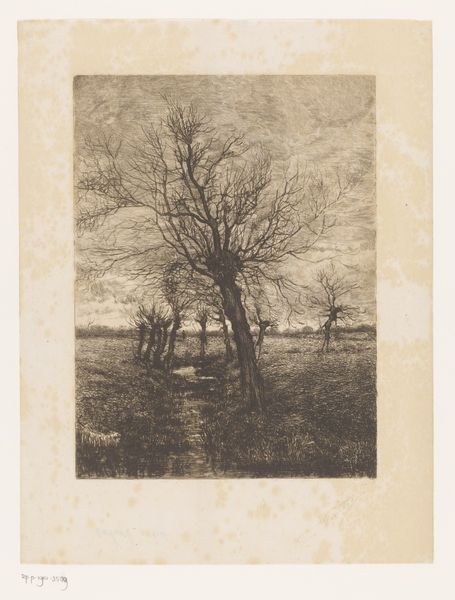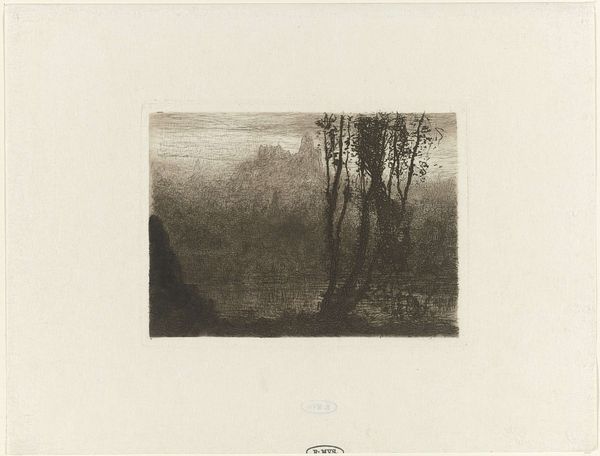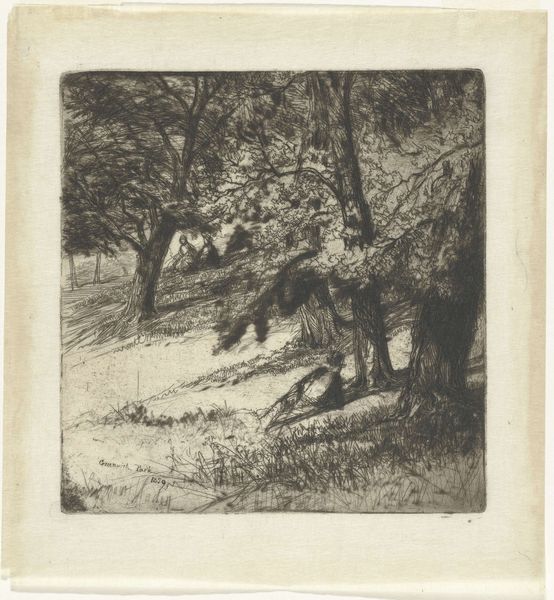
drawing, print, etching, plein-air
#
drawing
# print
#
impressionism
#
etching
#
plein-air
#
landscape
Dimensions: sheet: 9 15/16 x 12 15/16 in. (25.2 x 32.9 cm) plate: 6 1/2 x 6 11/16 in. (16.5 x 17 cm)
Copyright: Public Domain
Curator: Here we have Camille Pissarro’s "The Cottage," an etching created in 1879. What’s your initial impression? Editor: It's overwhelmingly somber. The muted tones and the way the light seems to recede evoke a sense of isolation and the harshness of rural life. Curator: That certainly reflects Pissarro's deep engagement with the plight of rural workers. The cottage itself can be seen as a symbol of both refuge and confinement within the socio-economic realities of 19th-century France. His prints are generally understood to examine the day to day of marginalized groups, like peasants. Editor: From a formal perspective, notice the density of the etched lines. They create a palpable texture, almost like feeling the rough surface of the cottage walls or the dense undergrowth. Pissarro's handling of light and shadow, particularly the way he uses hatching, is quite effective, right? Curator: Precisely. Consider, though, that Pissarro's focus extends beyond mere representation. This work should be contextualized within broader narratives of land ownership and class struggle that plagued rural communities during the late 19th century. This relates to his Anarchist ideologies during that period. Editor: I see what you mean. Yet, observing how the composition guides the eye from the foreground stones to the distant horizon demonstrates a keen understanding of spatial relationships, regardless of social commentary. The way the light plays across the surface of the cottage, creating highlights and shadows, also adds depth and dimension to the image. Curator: Indeed, there is the undeniable aesthetic component but looking closer at how he positions the cottage, almost swallowed by the landscape, evokes themes of marginalization and the relentless pressure on those working the land, issues often championed by socialist and anarchist circles of the period. Editor: It’s an insightful point to reflect on how the formal elements intertwine with the broader context. I found a lot about Pissarro to chew on! Curator: As did I, it's clear that a complex artwork like this is the intersection of various formal elements and pressing social concerns.
Comments
No comments
Be the first to comment and join the conversation on the ultimate creative platform.
